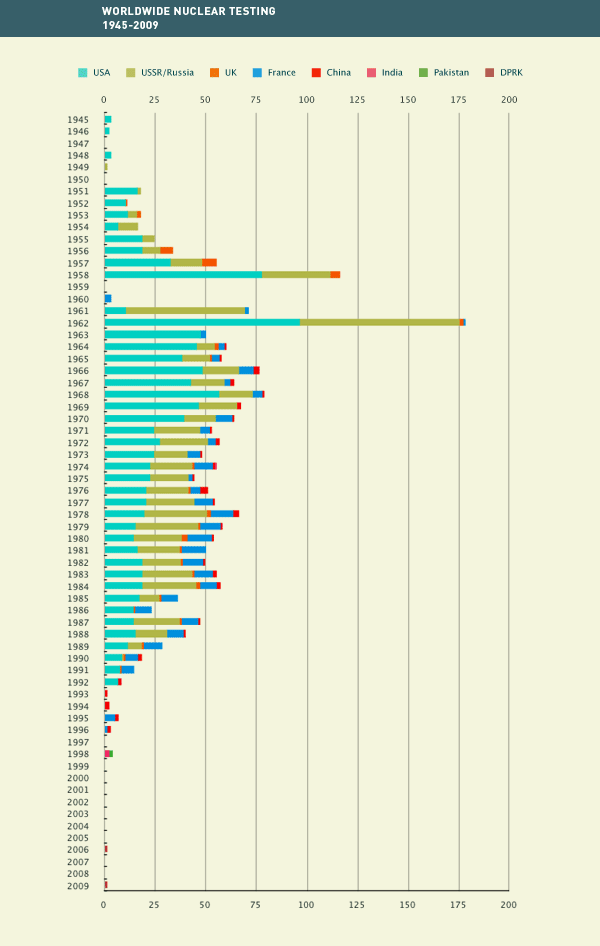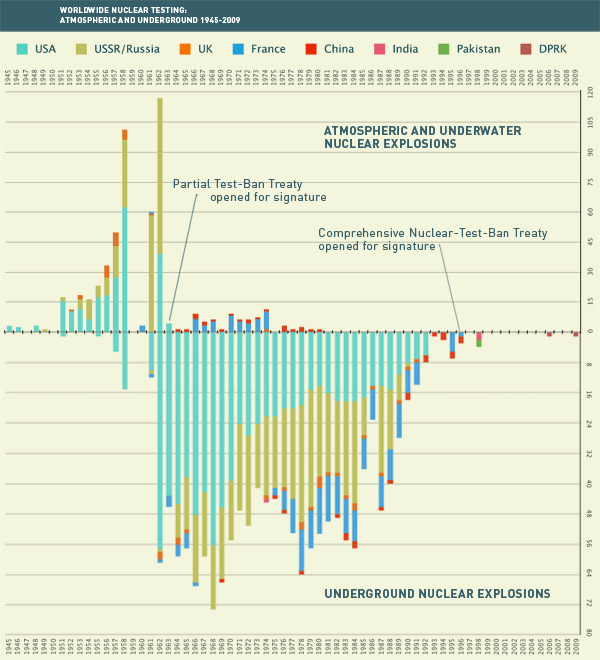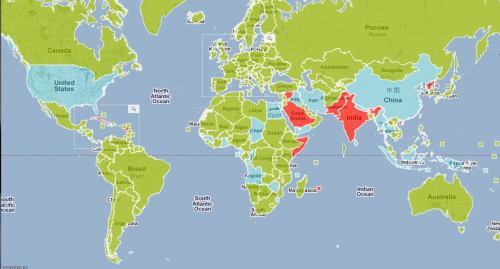Dimitriy T.M. and Keith Marszalek sent in a video by Isao Hashimoto, posted at Wired. The video, titled 1945-1998, shows the location of all known nuclear tests during that period, as well as the nation conducting the tests. It starts off slowly (with the U.S. test during World War II and the two bombs dropped on Japan), and the U.S. has a monopoly on nuclear weapons for several years. By the early 1950s the number of tests starts to increase and the U.K. and Soviet Union start testing. By the late 1’50s and through the ’80s, the flashes indicating tests (with different sound effects to indicate different nation) are pretty much constant, and then drop off quite a lot by the ’90s.
The Wired article points out that there have been two more nuclear tests since 1998 (when the video ends), both by North Korea.
I found this graph over at the Comprehensive Nuclear Test-Ban Treaty Organization website:
Broken down by type of test; since 1963 almost all testing has been underground:
They also have an interactive map that includes information such as who has signed the test-ban treaty, where tests have occurred, and locations of facilities under the international monitoring system. Here’s a map showing the status of the test-ban treaty; green nations have ratified it, light blue ones have signed but not ratified it, and red ones haven’t signed it (sorry I couldn’t quite fit the whole map on my screen at once, so the screenshot cuts off some areas):
Gwen Sharp is an associate professor of sociology at Nevada State College. You can follow her on Twitter at @gwensharpnv.



Comments 19
T — July 13, 2010
What happened in 1959 and 1960? Was there a temporary treaty? A major shift in military technology (causing a "distraction")?
larrycwilson — July 13, 2010
It would be interesting to know the current radiation levels at these testing sites. I'll check Google.
Ted — July 13, 2010
We're number 1! USA! USA!
jem — July 13, 2010
How is it that the United States has signed the test-ban treaty but not ratifyed it? Thats terrible....
Anna — July 14, 2010
What I think is most interesting, not so much which countries and when, so much as where. Many countries seemed to do nuclear testing in colonies and territories or in other countries, such as France and Britain, neither of which did any testing within the country itself. Others, such as China and the United States tended to do the testing in western regions (perhaps due to population). What I am wondering is why the United States which owns territories did so much testing within the states- unlike China, they had the option. What does this say about how the U.S. values its west coast? As a Californian, I'm appalled at how extensive nuclear testing has been in this region.
Pink — July 18, 2010
The video shows explosions, not just tests. It includes Hiroshima and Nagasaki and those weren't tests.
mary — September 2, 2014
How much radiation went into our oceans during the 25 + years of underwater testing ?
More or less than the now famous Japanese power plant ?